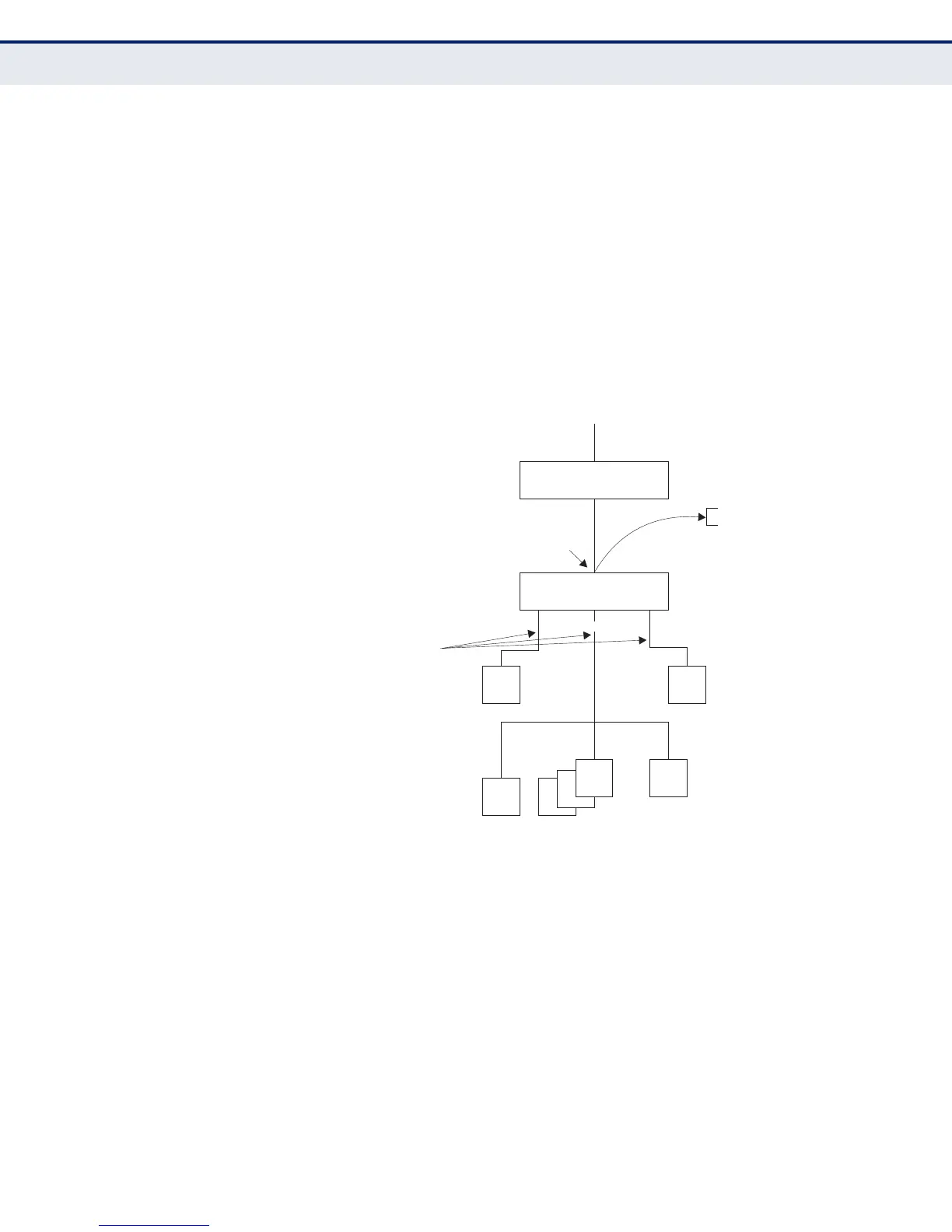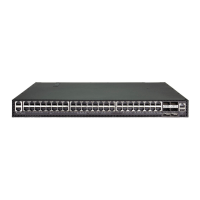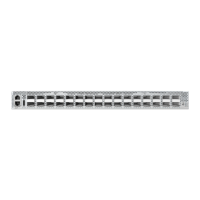C
HAPTER
15
| Multicast Filtering
Layer 3 IGMP (Query used with Multicast Routing)
– 411 –
CONFIGURING IGMP
PROXY ROUTING
Use the Multicast > IGMP > Proxy page to configure IGMP Proxy Routing.
In simple network topologies, it is sufficient for a device to learn multicast
requirements from its downstream interfaces and proxy this group
membership information to the upstream router. Multicast packets can
then be forwarded downstream based solely upon that information. This
mechanism, known as IGMP proxy routing, enables the system to issue
IGMP host messages on behalf of hosts that the system has discovered
through standard IGMP interfaces.
CLI REFERENCES
◆ "IGMP Proxy Routing" on page 947
Figure 243: IGMP Proxy Routing
Using IGMP proxy routing to forward multicast traffic on edge switches
greatly reduces the processing load on those devices by not having to run
more complicated multicast routing protocols such as PIM. It also makes
the proxy devices independent of the multicast routing protocols used by
core routers.
IGMP proxy routing uses a tree topology, where the root of the tree is
connected to a complete multicast infrastructure (with the upstream
interface connected to the Internet as shown in the figure above). In such
a simple topology, it is sufficient to send the group membership
information learned upstream, and then to forward multicast packets
based upon that information to the downstream hosts. For the switch,
IGMP proxy routing has only one upstream connection to the core network
side and multiple downstream connections to the customer side.
Layer3 Switch/Router
Router
PC PC
192.168.1.2
192.168.1.3
192.168.2.1 192.168.3.1 192.168.4.1
PC
PC
PC
Upstream
Interface
IP IGMP Proxy
To Internet
Downstream
Interfaces

